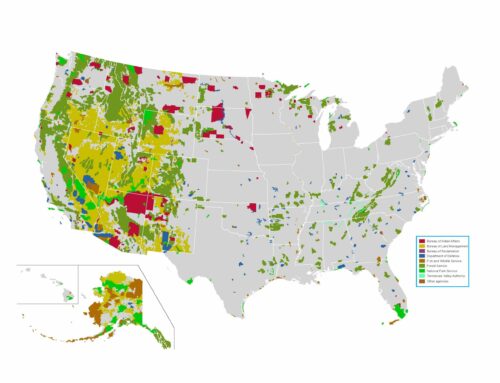by Greg Walcher, E&E Legal Senior Policy Fellow
As appearing in the Daily Sentinel
There are many studies on the history of the Bureau of Reclamation, established in 1902 to bring water, and life, to the West. Some writers claim it was needed to relieve overcrowding in the cities, to get people to move to farms. What nonsense.
The migration of the American population from farms to cities had barely begun, but almost two-thirds of Americans still lived on farms and in rural communities. The issue was not that Americans didn’t farm — it was that they didn’t farm in the arid West. There was no water. The Southwest was mostly uninhabitable by an agrarian society, and the Great Plains were known as the “great American desert.” The Homestead Act offered settlers free land, but that land was worthless if not near rivers and streams, which almost none of it was.
Congress decided to invest in irrigation projects, dams, reservoirs, and canals, with a vision to “make the deserts bloom.” Over the next 75 years, the Bureau of Reclamation did that — with remarkable success. Today the Southwest is the country’s fastest growing region, and the Plains states are the breadbasket of the world. However, Congress essentially stopped funding large-scale water projects 50 years ago, and the political support for such infrastructure is now almost nonexistent.
Despite that modern reality, the Bureau not only still exists, but is a behemoth with an annual budget over $1 billion and 5,296 employees. It owns 1,774 buildings, 304 bridges, 2,601 miles of roads, 338 reservoirs, 487 dams, and 8,116 miles of canals, all covering 7.8 million acres of land. The deserts are clearly blooming — 10 million irrigated acres are now productive farmland, and 31 million people in the region use water from these projects. So, what do 5,296 employees do now? Reclamation is frequently referred to as an agency desperately in search of a mission.






